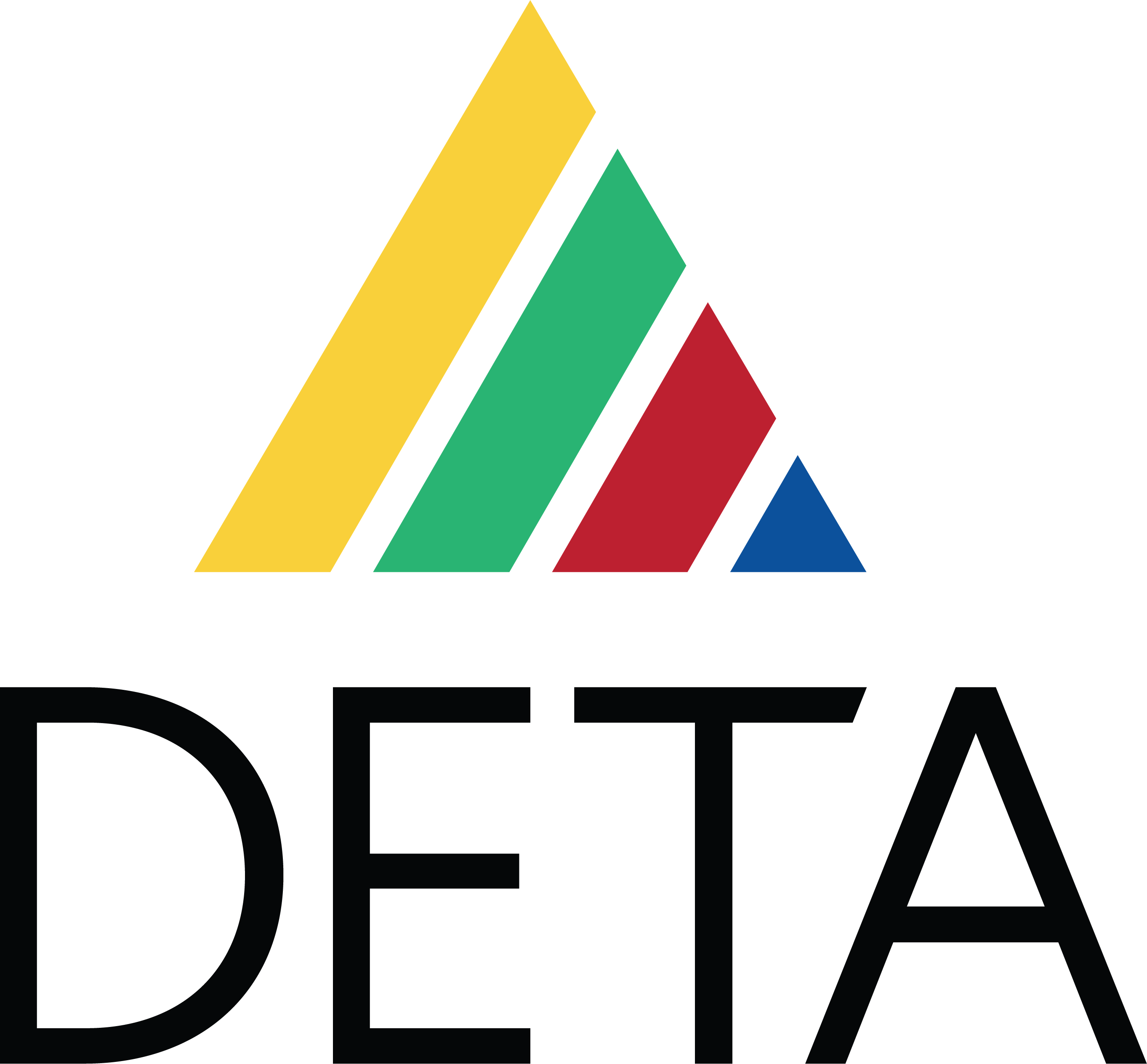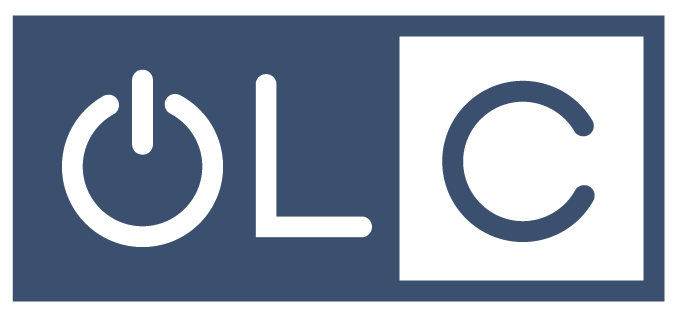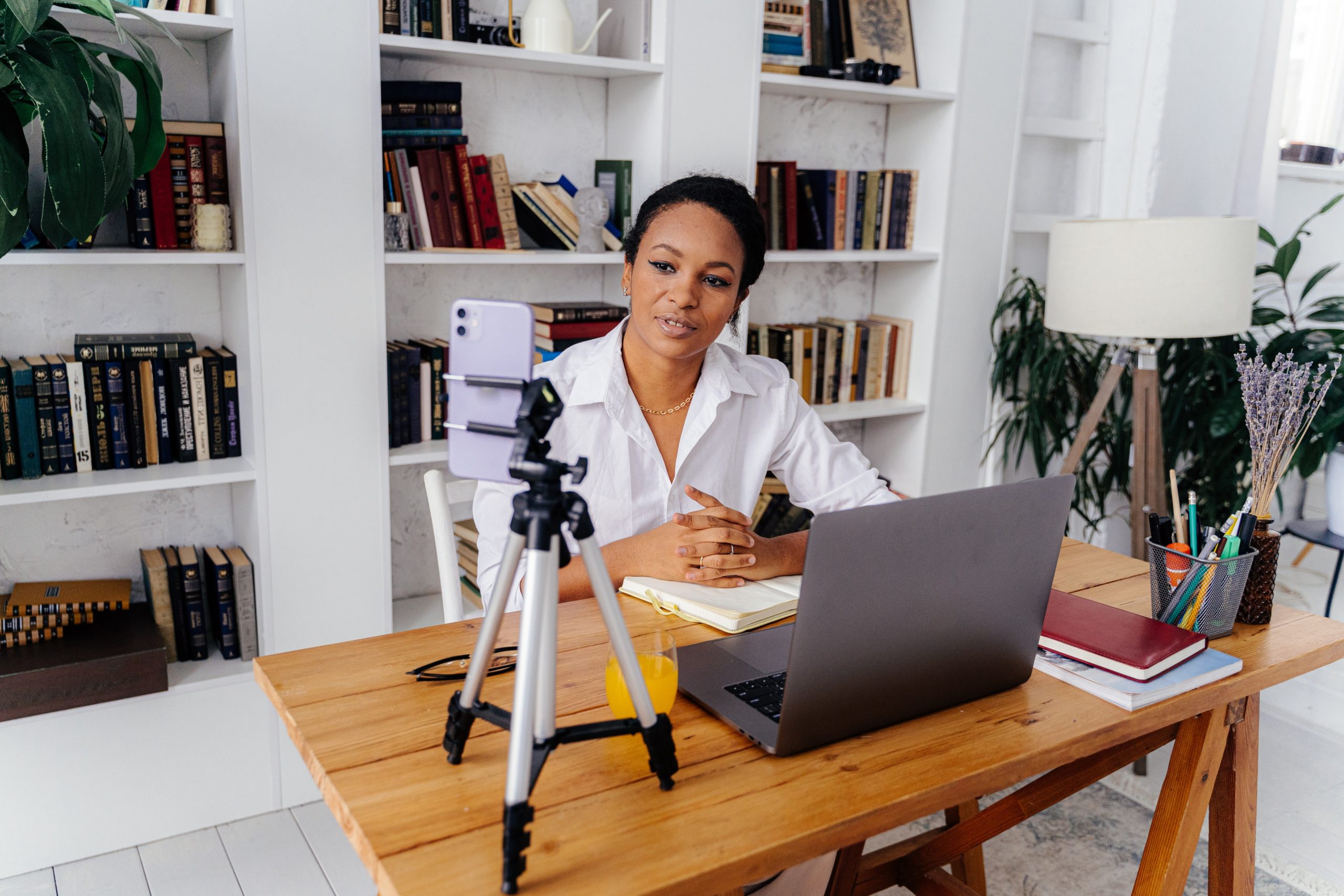Combinations of face-to-face and online learning modalities have been around for more than 20 years. But the COVID-19 pandemic has prompted college and university faculty to consider strategic approaches to planning blended learning that create meaningful connections, says Tanya Joosten, Senior Scientist and Director of Digital Learning Research and Development at the University of Wisconsin-Milwaukee and the National Research Center for Distance Education and Technological Advancements (DETA).
Growing interest in this area prompted the recent publication of Planning for a Blended Future: A Research-Driven Guide for Educators, of which Joosten was a contributing author. Presented by DETA, The Online Learning Consortium, and Every Learner Everywhere, the guide outlines foundational knowledge about the universe of blended modalities (including hybrid, hyflex, and flipped) and provides practical resources for faculty and administrators who are updating, optimizing, and extending the blended learning course offerings at their institutions.
One of Joosten’s contributions to the guide was the introduction of a new model she calls the “four dialecticals of blended learning.” She says she wanted a model that could “better capture blended and hybrid as experienced during the pandemic but also retain the integrity of the pedagogy,” and, as her academic discipline is Human Communication, she drew on the concepts of dialectical tension in relational dialectics theory.
“I wanted to provide readers with some applied and strategic steps to start thinking more about this blended university or college,” she explains. “How do they move forward to what we know in the model of blended learning is more likely to be statistically significant, and also qualitatively impact student outcomes?”
Looking for a new model
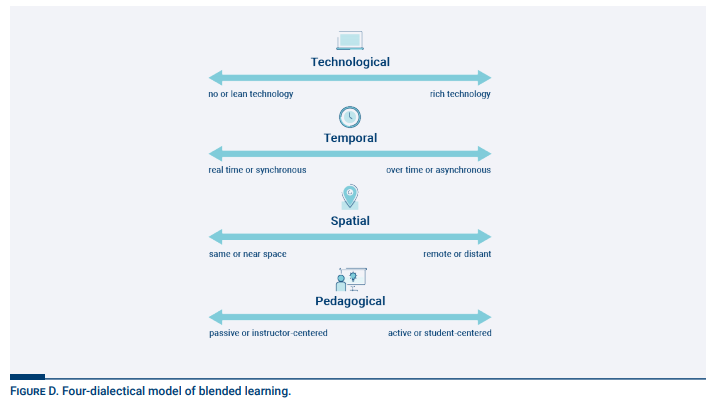
From Planning for a Blended Future: A Research-Driven Guide for Educators
Many of the existing ways to plan blended learning outlined it according to where it happened (how much of it is online) and by the technology (how digitally mediated it is). In recent years, with more attention to asynchronous models, discussions of blended learning planning also incorporated when it happened.
But Joosten wanted a model that illustrated the characteristics of blended learning in a way that accounted for the pedagogy. “We need to know the practices we’re implementing are actually having an impact on student outcomes,” she says.
Joosten eventually settled on four dimensions that blended learning courses can be viewed along:
- Technological: The leanness or richness of the technology used in a course
- Temporal: Whether students meet in real time or work by themselves
- Spatial: Whether students learn together in the same space or remotely from one other
- Pedagogical: How instructor focused or student focused the teaching practices are
The point of the four dialecticals model isn’t to “turn up” the course along each dimension but to “tune” the course purposely depending on the pedagogical task. For example, a context requiring less ambiguity may call for more synchronous meetings, while contexts requiring more flexibility may call for more asynchronous meetings.
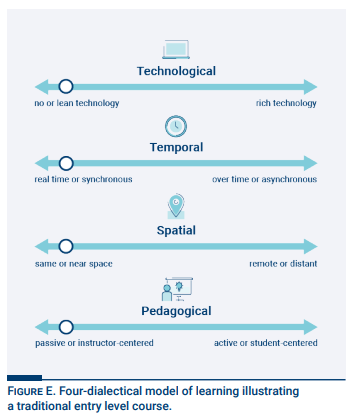
From Planning for a Blended Future: A Research-Driven Guide for Educators
Planning for active learning in the blend
Joosten says the first three dialecticals — technological, temporal, and spatial — have been foregrounded in decades of research on and innovation in distance learning. The pedagogical dialectical, however, is a less familiar concept that she believes is key to colleges and universities providing quality blended learning for students. As Planning for a Blended Future explains in more detail, many educators first look to digital learning as a supplement to current practices — or, in 2020, to manage emergency conditions — but the real potential is in planning for more active learning.
“Twenty years ago, research was saying over 80 percent of colleges were still lecture based,” she explains. “We’re slowly getting that it needs to have this dialectical of pedagogy moving to more active student-centered learning.”
Joosten says the four dialecticals of blended learning can help educators focus on and plan for specific instructional and learning practices: “We wanted to incorporate the fact that these practices will lead to students learning more, getting better grades, being more satisfied in their course, and being more engaged.”
For example, Joosten says the four dialecticals model can help an instructor reconsider a traditional model of providing lectures, either live or recorded, and assigning homework for students to work on independently. An alternative might be to break the course into two-week modules with interactive content delivery and discussion activities during which students process the content they’ve received so far by interacting with others.
Educators can then use online discussions and low-stakes assessments to understand what their students are grasping and what they still need help with. “And when they come to a face-to-face meeting now, it’s not just the instructor lecturing,” Joosten says.
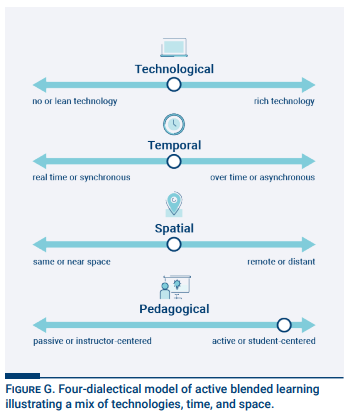
From Planning for a Blended Future: A Research-Driven Guide for Educators
“It’s actually interactive because they know the weaknesses in the students’ learning. That’s part of scaffolding learning. You know there was some sort of uncertainty about the content, and you’re able to have richer discussions to make sure that people didn’t just learn a portion of the knowledge they were supposed to achieve,” she explains. “You’re actually giving them an opportunity in a face-to-face classroom to make sure they’re learning all of it.”
Joosten says this transition to student-centered approaches to blended learning is important for removing barriers to equity for Black, Latino, Indigenous, and poverty-affected students. Her research has found blended learning to be the most effective learning model for closing equity gaps for these students.
“We also know that student-centered active learning is the most effective pedagogical model for students who are racially minoritized,” Joosten adds. “Everybody should have a chance to learn and grow and be able to retain through their courses and program, and we should be there to help them.”
Download Planning for a Blended Future: A Research-Driven Guide for Educators


